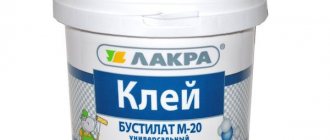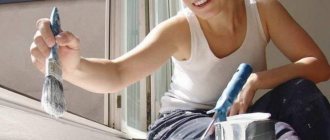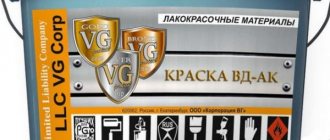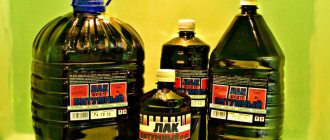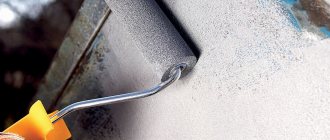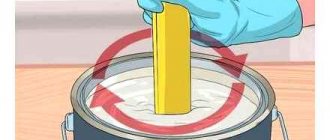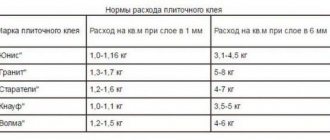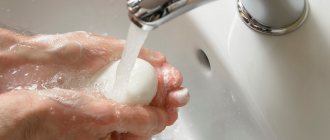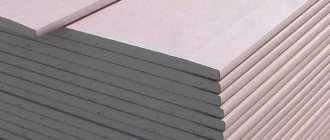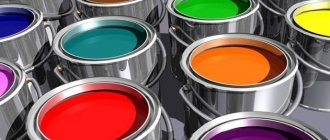Alkyd enamel PF-115 (GOST 6465 76) is a waterproof suspension with pigments and special fillers, intended for painting parts and decorative surfaces located inside or outside the building.
You can paint any metal coatings: pipes, fences, fences, swings, mechanical parts.
Enamel paints well on wooden surfaces: benches, gazebos.
Marking PF 115: meaning decoding
When purchasing paint, enamels or varnishes, you need to know the composition and characteristics. The numbers and letters on the bank have a specific meaning.
The name of the solution is always indicated first - paint, varnish or enamel.
Then mark the second group of signs. The letters PF indicate that the enamel is made from a solution of modified pentaphthalic resin (pentaphthalic varnish).
Number 1 - enamel is intended to cover external surfaces at any temperature, and 15 is a unique number of the material, which is indicated by the manufacturer (GOST).
Paints and varnishes can be made on the basis of natural polymerization resins or cellulose ether and are distinguished by a wide range and color.
As for alkyd enamel PF-115, the paint was produced more than 50 years ago (the brand is regulated by GOST 6465-76).
Over so many years, it has consolidated its reputation, is inexpensive and is considered one of the most popular on the markets, despite the wide range of new paint materials.
Many manufacturers try to save money and change the composition of paints at their own discretion, which negatively affects the quality of the product and reduces its service life.
To avoid running into an “experimentalist,” buy enamel only with the PF-115 “GOST” mark on the can.
Cans with a modified composition are marked “TU”.
As for the types of enamel, there are industrial and retail. Industrial ones need to be diluted with additional solutions (they are available in concentrated form). Liquid (retail) is ready for home use, but in some cases it is also diluted.
Precautionary measures
When working with alkyd enamels, in particular with PF 115, the following precautions must be observed:
- The paint should be stored in airtight packaging;
- Take measures to ensure fire safety;
- Carry out painting work with protective rubber gloves;
- Avoid inhaling enamel fumes;
- After completion of work, ensure thorough ventilation of the room for 2-3 days.
Taking into account the above facts, we can conclude that alkyd enamel PF-115, developed in the USSR back in the 70s of the twentieth century, has not yet lost its relevance. The ability to use when painting any surface, the high quality and appearance of the resulting protective and decorative coatings ensured the wide popularity of the paint among the average consumer.
Video demonstration of removing PF-115 enamel using RIPAG remover
In addition, the favorable price/quality ratio allows domestic alkyd enamels to successfully compete with leading foreign manufacturers.
Physical state and chemical composition
The paint itself is viscous, with small solid particles.
PF-115 enamel differs in color, brightness, tone and density, which is created by pigments (colored powders) that are responsible for the formation of shades and impart transparency to some materials.
Pentaphthalic varnish consists of vegetable oils, resin, rosin and glycerin.
In addition to the pentaphthalic material, various oils and a drier are added to the solvent - a substance that helps dry the surface faster.
An organic solvent (white spirit) is added specifically to oil solutions.
The transparent substance is extracted from oil, it has an oily consistency, dilutes the paint if it is too thick and does not affect the composition itself.
The paint contains titanium white (titanium dioxide), a non-toxic substance that creates a white pigment in paint materials, holds oil on the surface and diffuses light.
Alkyd enamel is distinguished not only by a variety of colors, but also by moisture resistance, tolerates long-term exposure to UV radiation, and does not crack after drying due to its strength and elasticity.
PF-115 is already sold in a specific color, but you can change it by adding another paint to the solution. At the same time, the volume will increase.
The most common shades:
- Blue.
- White.
- Grey.
- Beige.
- Pink.
- Orange.
- Cherry.
- Citric.
- Terracotta.
- Khaki.
- Red.
- Salad.
- Ivory.
- Black.
- Blue.
- Turquoise.
Plastic, easily bendable structural parts retain their original appearance after painting - the enamel does not chip or wear off with frequent interaction.
About some shades
Artistic oil paints are available in a wide range of shades, but when choosing them you should consider some points. By what characteristics can you choose quality products? Below is useful information for artists.
| Name of shades | Briefly about production | Binder or base for oil paints | Hue |
| Zinc white | For preparation, an electrolytic method is used, which produces zinc dioxide. | Flaxseed or nut oil | Cream |
| White lead | Lead carbonate is used as the basis for preparation. | Walnut or flaxseed oil | They differ from zinc in that they leave warm streaks on the canvas. |
| Titanium white | Titanium dioxide is used as a base. | Vegetable or artificial oil | Rich white color |
| Yellow Neapolitan | Nitric oxide combines with antimony acid. The composition uses zinc white, ocher and cadmium yellow. | Oil is produced on the basis of natural or inorganic binders | Light yellow with golden |
| Cadmium yellow | Made from magnesium and zinc sulfates | Natural or artificial oils are used as a binder | Colors from light yellow to dark yellow |
| Cadmium red tones | Made from cadmium selenide and sulfite | The binder can be based on natural or artificial oils | Orange to purple |
About some features of zinc white we can say that:
- they dry relatively slowly;
- their cover rate is average;
- if you make a palette based on them, the strength of the mixture during coloring will increase;
- the properties of not losing whiteness are inherent in them;
- in a dark room they turn yellow, but under direct exposure to sunlight their saturation is restored;
- under the influence of external negative factors, whiteness is not lost;
- Whitewash is used to work as a base for other paints.
About lead white:
- if you draw on paper, then the types of these paints are more viscous;
- dry quickly and at the same time give faster drying to other paints;
- fit perfectly on the surface and adhere to it;
- These oil paints can cover the surface the first time, their hiding power is high;
- despite the advantages, such paints emit harmful substances;
- under the influence of external negative factors they quickly darken, but at the same time under the influence of sunlight they retain their whiteness.
About Yellow Neapolitan:
- if you draw with oil on paper, you can note that this product has a fairly high viscosity;
- quick-drying oil base;
- this color quickly darkens, although it is sufficiently resistant to sunlight.
About some features of cadmium yellow paints:
- if mixed with zinc-based paint, the color will darken;
- color changes when adding paints with iron oxides;
- do not change color even after complete drying on the surface;
- It is best to dilute with nut oil;
- Coverability is high.
Advice! If mixed with blue flowers, you can get a lot of amazing green tones.
About some features of cadmium paints:
- the name suggests that it is based on a cadmium-tone pigment;
- high ability to cover the surface;
- when using solvent No. 2 it darkens.
Important! Ladoga is a good artistic paint and is in demand among art masters.
Technical characteristics of paint PF-115
The technical characteristics of PF-115 may change not only due to a change in color. Due to the slightest difference in oil or other components, the proportions in the paint may change, and therefore the properties of the entire composition (everything is compared according to GOST 6465 76).
Because of these differences, the period during which the paint can be used may be shortened or increased, that is, the service life depends on changes in the slightest proportions.
In first place in terms of stability is PF-115 white enamel (the varnish is contained in a large ratio, at least 27-28%). PF-115 gray enamel contains the least amount of substances - about 20%, blue up to 25-26%.
But this does not mean that all colors except white are unstable - the solutions contain many other impurities that improve quality.
Enamel PF-115 technical characteristics GOST 6465 76
Table
| Shine | From 50% |
| Loss of weight after complete drying | Up to 71% |
| Degree of dilution with water (viscosity) at 20°C | Up to 123% |
| Drying at 19-22°C | During the ducks |
| Shock resistance | Up to 40 |
| The ability of a pigment to cover the color of a surface | Up to 115 g/m2 |
| The cost of enamel for 1 layer depends on the chosen color | Up to 180 g/m2 (maximum 0.18) |
| Maximum usage temperature | Up to -50…+60 °С |
| Toxic substances | Moderate discharge, not above average |
| Flammability | Highly flammable |
| Smell | Harsh, poisonous |
| Hardness | Up to 0.25 |
| Adhesion of surfaces of dissimilar liquid or solid bodies | 1 point |
| Permittivity (dielectric) | Until 11 |
Try not to lean too much over the part to be painted and avoid close contact with fire (the use of heat guns is prohibited).
Always wear protective clothing, gloves and a respiratory mask.
After completing the work, ventilate the room - the smell of paint should completely disappear.
How long does oil paint take to dry?
- How long does oil paint take to dry?
- Solvents for removing old paint
- Floor paint for wood floors
How long does it take for painted surfaces to dry?
Oil paints are mixtures of drying oils made from natural oil or an artificial substitute, filler and coloring pigments (there are hundreds of shades of paints). They are used for painting wooden or metal surfaces (floors, walls, roofs, doors). Oil paint protects the surface from the penetration of steam or moisture. That is why this paint is often used to treat metal pipes and important structural elements of buildings.
How quickly the oil paint you choose dries depends on its formulation, humidity and ambient temperature, lighting and other external factors. Oil paint, unlike water-based paint, when drying, does not lose moisture, which is simply not present in the composition. An oil film appears on its surface due to oxidation processes. In order for these processes to occur faster, it is necessary to accelerate the interaction between the oxygen contained in the air and the paint surface.
How to paint
Experts advise carefully studying the composition of the paint indicated on the packaging. It is believed that a really good oil paint contains at least ten to twelve components. To ensure the formation of a stable oil film occurs faster, apply the paint with a brush or roller to a carefully prepared surface. On average, paint applied in a thin layer takes about a day to dry. If you do not like the unevenness of the coating or the presence of unpainted fragments, after the first layer has dried, apply another one; it will take a little longer to dry.
To speed up the oxidation process and the formation of a permanent film, you can heat the painted surface. For example, some artists, after completing their paintings, dry them using regular batteries. A heater or heater will speed up the drying of paint indoors. Heating makes the film stronger. Do not leave the heater unattended to avoid the risk of fire. If you are going to paint walls, floors or ceilings yourself, be sure to open the windows in the room, since oil paints are quite toxic and their fumes can seriously harm your health.
There are chemical accelerators for the drying process of oil paint. For example, you can add driers (or drying accelerators) to it. A small amount of them is required; you need to add driers to a can of paint, following the instructions on the package. After this, the resulting mixture must be mixed very thoroughly. Dryers significantly speed up the drying of painted surfaces, but do not affect the quality or density of oil paint.
Purpose of paint, how to use it correctly
Oil paint PF-115 is suitable for painting stone and brick surfaces, metal structures, wood, concrete, plaster (cement).
Despite the fact that the maximum operating temperature of the enamel reaches +60°C, you should not paint the roof (slate or tin covering).
Severe overheating of the roof will destroy the paint, it will quickly crack and fade.
Do not paint batteries or pipes while they are working.
The paint layer on a hot battery dries too quickly, volatile substances evaporate, and the enamel falls off in pieces. To prevent this from happening, apply the solution to a disconnected, completely cooled radiator.
The optimal temperature for applying enamel is +5°C.
When decorating outdoors, it will be better if all structures are located in shaded areas. To protect parts from rust, mold or other damage, it is recommended to add special antifungal additives to the paint.
The peculiarity of PF-115 paint is that you can apply several layers of the same color to a structure and get a shade that will differ from the original sample, but the solution will remain the same elastic if one layer was applied.
After drying, parts painted according to the rules will easily withstand the temperature.
This does not apply to the roof, because a constant temperature pressure will be exerted on the roof.
Staining order
You can paint the surface using alkyd enamel at an air temperature of +5...+35 degrees Celsius. Before painting, it is recommended to prepare any surface (clean, prime).
Select quantity by color
Manufacturers produce PF-115 enamel in more than 30 shades. Before painting, you need to buy enough paint and varnish to carry out the repair. It is advisable to first calculate the area of the surface to be painted.
Typically, manufacturers indicate enamel consumption in kilograms or liters per certain number of square meters. The surface area for painting is calculated by multiplying the length by the width. The result is taken in meters. As a rule, one liter of enamel is enough for 10 square meters. The consumption of paints and varnishes depends on the method of application. The thinnest layer is obtained using a paint sprayer.
The most paint is wasted when painting with a brush. The consumption of coatings also depends on the porosity of the base. Painting metal will require less enamel than painting concrete.
The consumption of paints and varnishes is influenced by the selected color of the product. The fact is that each shade of PF-115 has its own composition. The greatest consumption is for white paint, the least - for black. One kilogram of red or snow-white enamel can paint 10 square meters, brown, green and blue - 16, 14 and 12 square meters, black - 20 square meters of area.
See also
Top 6 ways to use spray painting and painting techniques that you will need
Paint schemes
Each type of surface has its own painting characteristics. Before applying paintwork materials to the surface, the suspension must be mixed well, and if necessary, add a solvent (no more than 5-10 percent of the volume).
Metal
Before painting, surface preparation is required: removing rust, degreasing with acetone or solvent, and sanding. The sanded base must be primed with an anti-corrosion primer for metal.
Metal elements and structures are painted in 2 or 3 layers. The film thickness on the surface should be 18-23 microns. After applying the first coat, you must wait 24 hours for the coating to dry. The hardening process occurs at a temperature of +20 degrees Celsius. Surface heating up to 100 degrees is allowed. In this case, the paintwork will dry in 30 minutes. The second layer of enamel can be applied only after the first layer has completely dried.
Trees
Before painting, wooden surfaces must be cleaned of dirt, dust and crumbling paint. Be sure to sand with sandpaper or an abrasive wheel of medium and fine grain. After removing the old coating, the wood is degreased and primed. After priming, wait at least 24 hours for the surface to dry. Only perfectly dry wood can be painted. Painting is carried out in 2 layers, maintaining an interval for drying. The film thickness should be 20-23 microns.
Plaster, concrete or brick
Before applying enamel, the surface must be cleaned of crumbling particles and leveled using plaster or putty. Primer is applied to a cleaned and smooth surface. After priming, you need to wait at least 24 hours for the surface to dry. Only perfectly dry walls can be painted. Paint is applied to concrete or plaster in 2-3 layers, leaving an interval for drying. Film thickness - 20-23 microns.
Tools needed for painting
The solution can be applied with a wide brush, roller or pneumatic spray gun.
The choice depends on personal preference, but a sprayer will require more solution (and this is an extra expense).
If you choose a brush, you will spend more time on the work. Painting with a roller is faster and more economical.
When using a spray gun, you need to make a thinner consistency (if you need to paint large sheets). For smaller parts, a roller or brush is suitable (mainly for thin gates).
You need to work quickly with the spray gun - fill the container with the solution as soon as it runs out, and treat the surface without stopping so that the mixture does not have time to dry.
The second layer must be applied after the first has dried (in a day).
You can paint with aerosols, but they are much more expensive, although they are convenient to use.
Working with a brush on metal is the most unprofitable - drops of paint flow down, stains remain, and more material is wasted. The advantage of the brush is that it will fit into all the cracks and cover all the hard-to-reach places.
The best choice is a roller. The layer is applied evenly and not much paint is wasted.
After cleaning the structure from dirt, apply a thin layer of primer to the part (the surface must be dry). It is better to treat with 2-3 layers of soil mixture.
Features of application
Enamel paint has good adhesion, which makes working with it much easier.
The surface on which it is applied must be thoroughly cleaned of dirt and dust. There is no need to putty the surface. It is enough to first coat the surface with a special primer and let it dry completely. Different types of enamel paints, united under a common name, still have different technical characteristics. Therefore, we cannot talk about the universality of their use for various surfaces and types of work. Nitrocellulose is excellent for wood processing, while alkyd has a wider range of applications: from exterior work to decorative painting.
Enamel paints have a high density, so most of them must be diluted before use. To do this, you can use almost any solvent or thinner of any kind.
Enamel PF-115: paint consumption per 1 m2: influence of shades
The solution may increase due to different light transmittance.
The more often a layer is applied, the greater the consumption. The surface itself plays a big role - if the soil is selected correctly, then the costs of the material are reduced.
In tropical climates, enamel remains stable for 12 months, in constant cold conditions up to 3-4 years. Consumption per 1 m2 is usually indicated on the can.
Paint consumption per 1 m2 of metal or other surfaces with a thickness of up to 23 microns is up to 180 g/m2 (0.18), you can see calculations for a specific color below.
PF-115 consumption per 1 m 2 of single-layer coating (calculation in kg):
- Up to 0.14 (red).
- Up to 0.06 (black, the most economical).
- Up to 0.1 (for blue).
- Up to 0.08 (for brown).
- Up to 0.14 (for white).
- Up to 0.11 (for gray color).
To determine the amount of another shade, you need to multiply the number first by the number of layers, and then by 0.9 (coefficient).
It should be taken into account that the subsequent layer is applied thinner, which means the consumption is less.
Enamel test PF-115 video
Enamel PF-133
PF-133 enamel has a fairly wide range of applications.
It can be used both for painting containers and for wooden and metal surfaces that are constantly exposed to the atmosphere.
PF-133 can be of various colors, at the request of the customer.
— externally the film looks glossy
— it is recommended to apply two layers of material
— guaranteed shelf life of six months
PF-133 can be applied to a cleaned and prepared surface in different ways: by jetting, dipping, brushing, electrostatic spraying, pneumatic and airless spraying. If the material is applied to a primed surface, the service life of such a coating will be at least three years.
GOSTTU
GOST 926-82
TYPE
PF-133 enamel is a suspension of pigments and fillers in alkyd varnish with the introduction of organic solvents, drier and other additives.
RECOMMENDED USE
It is used in railway transport for painting containers, rolling stock and other metal and wooden surfaces exposed to the atmosphere.
DESCRIPTION
Enamels are resistant to weathering, mineral oil and various detergents. The coating based on PF-115 enamel is resistant to temperature changes from minus 50°C to 60°C.
CERTIFICATION
Hygienic conclusion of the Office of the Federal Service of Rospotrebnadzor for the city of St. Petersburg, valid throughout Russia
SPECIFICATIONS
Color - at the request of the customer; Appearance of the film - glossy; Drying time at a temperature of (20±2)°C to stage 3 - no more than 24-30; at a temperature of (82±2)°C to st. 3 - no more than 1.5-2 hours; Proportion of non-volatile substances by weight - 46-69%, mass; Consumption per layer - 40-55 g/m²; Thickness of one layer - 18-23 microns; Recommended number of layers - 2 .
MIXING RATIO
DILUENT
If necessary, the enamel is diluted to working viscosity with solvents: a mixture of solvent with white spirit (nefras - C4-155/200) in a ratio of 1:1 by weight, in an amount of no more than 30% by weight of the enamel. PF 133 enamel can also be diluted with a mixture of xylene with white spirit (mass content of white spirit no more than 50%) in an amount of no more than 30% of the total volume. When applied by electrostatic spraying, the enamel is diluted with RE-4V or RE-3V thinner.
CLEANING TOOLS
To clean instruments, use a mixture of solvent and white spirit in a 1:1 ratio by weight.
CONDITIONS OF VIABILITY
Service life: PF-133 enamel when applied in two layers on a pre-primed surface is at least 3 years.
WARRANTY PERIOD OF STORAGE
In unopened original packaging - 6 months from the date of manufacture.
SURFACE PREPARATION
Before application, the surface is cleaned of dirt and dust and degreased. It is recommended to pre-coat metal surfaces with primers such as GF, EF and others, and treat wooden surfaces with drying oil. Before using the enamel, keep it for 24 hours at room temperature, stir thoroughly until smooth. If necessary, dilute with the above thinner.
APPLICATION METHODS
Pentaphthalic enamel is applied to the surface to be painted using pneumatic and airless spraying, jetting, dipping, brushing, and it is possible to apply enamel using electrostatic spraying.
CONDITIONS OF APPLICATION
Apply at ambient temperatures from 5°C to 30°C by pneumatic and airless spraying, jetting, dipping, brush, application by electrostatic spraying is possible
The interlayer drying time at a temperature of 20°C is 24-48 hours.
PRECAUTIONARY MEASURES
The material is flammable! Do not work near open sources of fire. Work should be carried out with good ventilation, wearing rubber gloves, using personal protective equipment
Avoid contact with respiratory and digestive organs. If the material gets on your skin, wash it with warm water and soap. Store the enamel indoors, away from direct sunlight and moisture at a temperature not lower than minus 200C.
Certificate PF-133.doc
Painting scheme with PF-115 enamel
Primer for metal: use “GF-0119”, “VL-05”, “GF-021”, “VL-023” (always with the number 0 at the beginning).
You can paint without primer, but then the enamel must be diluted with a solvent (sometimes up to 50%).
A rusty surface can be treated not only with PF-115 (in two layers), but also with “Unicor K” - a water-dispersion primer paint with the addition of auxiliary substances and a synthetic polymer (one layer is enough).
PF-115 paint is suitable for treating oiled wood - apply no more than three layers. Wood treated with drying oil will be covered with a protective film and will save enamel consumption.
Three layers are applied to plaster, brickwork, concrete coating, old, worn or in need of restoration surfaces.
After applying the solution, you need to wait at least a day; in some cases, removable parts can be dried at a temperature of no more than 110°C (for one hour).
Applications and recommended paint schemes
Waterproof alkyd enamel PF 115 can be applied with any type of painting tool - brush, roller, spray. When calculating the amount of paint required, you must definitely take into account the characteristics of the surface to be painted and the color of the paint.
Concrete, brick, unsanded wood absorb paint quite intensively and its consumption will be greater than when covering planed wood, metal or previously painted surfaces.
Selecting the amount of paint by color
Depending on the color, the consumption of standard paint is within fairly large limits. At room temperature, to paint 1 m2 of the same type of unprimed surface you will need:
0.1-0.14 kg - white paints
0.05 – 0.06 kg – black paints
0.07 – 0.1 kg – blue paints
0.07 – 0.08 kg – brown paints
0.1 – 0.2 kg – red paints
The calculation is given for single-layer painting. When determining the real one, the number of layers is multiplied by the given figures and again multiplied by a factor of 0.9 - each subsequent layer uses less paint than the first. The second coat can be applied no earlier than 24 hours after completion of the previous coating.
Only perfectly dry surfaces, heated to a temperature of at least +5 0C, can be painted. It is optimal to carry out painting work using PF 115 in dry, windless weather at an external air temperature in the range of +15 ... +22 0C. In this case, the paint will maintain optimal viscosity, the solvent will not evaporate too quickly from the surface, and the risk of drips will be minimized.
The method of application also affects paint consumption. If you use a roller, it will be larger than a brush, and a sprayer may lead to some overuse of the composition. Also, the average consumption directly depends on the quality of preparation of the surface for painting and compliance with standard paint application schemes.
General step-by-step instructions for using PF-115 paints
The first thing to do is to remove dust, dirt or rust from the parts. Wait for the surface to dry or dry it with a heat gun.
If you are going to paint wooden surfaces, treat the wood with an antiseptic (and the metal with primer).
Mix the enamel with solvent, if necessary.
Choosing a primer for metal
Alkyd enamel PF-115 according to GOST is ideal for painting structures made of non-ferrous metal (aluminum, steel, brass or copper).
Before applying the first layer of mortar, pipes, benches, fences or swings are coated with a special primer for metal.
The primer enhances the adhesion of paint to a metal surface, slows down the process of peeling and rust on parts, increases the service life of the entire structure and reduces consumption.
People who don't prime at all often blame the quality of the enamel when surfaces show rust spots or chips.
But most often the reason for rapid deterioration is the lack of primer under the layer.
It is more profitable to buy primer (there is a quick-drying one) than to redo all the work and spend twice as much money.
The primer is available not only for non-ferrous metal, but also for ferrous metal (cast iron), iron coatings and various alloys.
You can buy primer for coatings (converters) that already show signs of destruction - just apply the solution to the damaged surface.
Types of primer mixtures:
- Alkyd – quick-drying, durable, protects the metal from the inside.
- Based on orthophosphoric acid – removes rust and restores damage.
- Acrylic – levels, enhances the adhesion of surfaces of various liquid compositions.
- Passivating – for external application, moisture-resistant, protects against rust.
- Epoxy – moisture resistant, suitable for painting cars.
- The primer is available in the form of a powder mixture (you need to dilute it according to the instructions indicated on the package).
Before purchasing, check the composition on the bag (based on the amount of consumption per 1 m2 of PF-115, you can calculate how much soil will be needed for the entire area). The mixture must be diluted strictly according to the instructions.
How to paint metal surfaces correctly
After the primer has dried, open the can of enamel (don't forget that the marking should contain the number 0).
Apply the first coat of paint to a clean surface.
Without a primer, you can paint decorative metal parts that are located at home and not outside (you can add white spirit to the solution to thin it).
If PF-115 paint does not have special additives (corrosion converters), you cannot paint untreated rusty parts; be sure to wipe them with a degreaser.
Drying oil for wood processing
It is better if the wood is treated with drying oil - foam, which contains a lot of vegetable oils that have undergone all oxidative processes and pressure at high temperatures. Drying oil is viscous and is suitable for mixing varnishes, paints and enamel solutions.
The solution is used for protective impregnation before applying the main paint and as an independent coating.
Types of drying oil:
- Natural – without artificial solvents, based on flaxseed, sometimes sunflower or hemp oil (contains a drier).
- Semi-natural – sunflower oil mixed with white spirit or other solvents.
- Combined - from oils that have dried (thickly grated paints are made).
- Synthetic - from coal, oil, waste synthetic rubber. Used to create dark shades. It has a pungent odor, is cheap due to its low quality and is used only for external treatment.
To paint wood or prepare a paste for mixing paints and varnishes, a high-quality impregnation must be light.
It can only be applied at room temperature. With hemp oil, the solution has a darker shade, and sunflower drying oil takes the longest to dry, and does not always dry out even after 24 hours.
Natural drying oil breathes new life into old wood, returning the brightness and shine of the treated surface.
The only thing is that it is not recommended to lubricate floors with drying oil - the protective film cannot withstand constant pressure.
The combined solution is suitable for treating wood before painting or priming.
How to paint wood
First of all, clean the wood from dust and dirt, then saturate it with drying oil (it is convenient to work with a wide brush with long bristles).
If you decide to disinfect wood with an antiseptic, be careful when choosing products - most of them are only suitable for acrylic-based paints; when mixed with alkyd enamel, the surface may swell after painting.
Don't skimp on the liquid.
The next step is drying.
When the wood dries, paint the surface with enamel at least three times (wood absorbs all liquids well). Use a roller or brush.
After the first layer has dried, it is recommended to sand the surface, then the wood will be smooth, without lint. Apply the next two coats without sanding, but be sure to allow the enamel to dry after each application.
Aerated concrete, plaster, concrete, brickwork
All mineral surfaces are painted without applying primer. Treat the surface with anti-mold products. You can paint the walls only six months after laying (humidity no more than 15%).
Enamel PF-115 technical characteristics: consumption depending on color, compliance with GOST
PF-115 paint has high adhesion to various surfaces, therefore it is used when carrying out finishing work, for painting metal structures and mechanisms. It has decorative properties and is resistant to ultraviolet radiation and moisture. After hardening, its layer is elastic, which reduces the likelihood of cracking and chipping while the painted objects are flexible. PF-115 enamel, the technical characteristics of which differ depending on the color, according to GOST, may have a different ratio of components. As a result, it may have a different operational life.
How to decipher the name
PF-115 enamel was developed and launched on the market more than 60 years ago. Despite the fact that there are more modern compositions, it is still considered one of the most popular for various types of finishing work. Its popularity is justified by its affordability and breadth of application. The paint is manufactured in accordance with GOST 6465-76.
Attention! To reduce the cost of the composition, some manufacturers change the chemical composition of the enamel, which often negatively affects its performance properties. You can determine such a product based on the information on the jar about compliance with the specifications. Almost always paint according to GOST is the best.
The name PF-115 is a marking. The letter designation consisting of the symbols “PF” indicates that pentaphthalic varnish is used as a binder base in the enamel . This substance belongs to alkyd resins. It is thanks to this that pentaphthalic enamel can be used for external and internal work. The numerical part of the name also carries information. The number “1” indicates the possibility of using paint in different temperature conditions, and the inscription “15” is a serial number, which is determined in GOST.
Physical state and composition
As for the physical state, alkyd paint is a viscous mixture of liquid with a suspension of solid particles. It contains:
- color;
- pigments;
- White Spirit;
- desiccant;
- pentaphthalic varnish;
- titanium dioxide.
Depending on the shade, the chemical composition of the enamel may differ. This is partly expressed by the different percentages of components. Colors that are excellent in color have their own richness. For the nominal volume of one paint, you literally need a couple of drops of color additive, and for others, tens of times more.
Video - Enamels PF-115. Which is better?
The difference in chemical composition directly affects the performance properties of the dry coating obtained as a result of drying the paint layer. The most stable 28% pentaphthalic varnish is added to it In blue paint it is 26%!, but in gray paint it is only 20%! Many components for providing and fixing color can make the composition more wear-resistant, so it cannot be said that white enamel will be the best in terms of operation.
Technical characteristics of PF-115
This material has a number of properties that make it the optimal choice for achieving decorative, stable color and long-term protection of the painted surface. The components used for its manufacture are relatively inexpensive, which makes this product affordable.
Table 1. Properties of PF-115 enamel.
| Characteristic | Meaning |
| Mass fraction of substances remaining after drying | 48-71%! |
| Gloss level | from 50.5%! |
| Viscosity at 20°C | 60-123 |
| Cure time at 20°C | up to 24 hours |
| Hardness | 0,20-0,25 |
| Impact resistance | up to 40 |
| Covering power | 60-115 g/m2 |
| Consumption | 100-200 g/m2 |
| Substrate temperature during application | from +5 to +35°C |
| Operating conditions | -50. +60°C |
The complex chemical composition of enamel requires careful handling. You need to protect your eyes and skin from droplets. The paint contains flammable substances. This prohibits its use near fire sources. Alkyd enamel has a pronounced odor and moderate toxic properties. When used indoors, constant ventilation is required until evaporation is complete.
Purpose and use
PF-115 is a universal paint, thanks to which the composition can be used for painting:
- wood;
- concrete structures;
- cement plasters;
- bricks;
- stone;
- metal
Attention! Although the paint adheres well to various materials, it cannot be used on surfaces subject to strong heating. First of all, this concerns the roof. created with its help on slate or sheets of tin can crack and fade. It is destroyed by a combination of ultraviolet radiation and heat.
Enamel should be applied only when the temperature range is from +5 to +35°C. Its use for painting hot heating radiators and other warm communications is unacceptable. In this case, an unnaturally rapid evaporation of volatile substances occurs, and as a result, accelerated drying is observed. Such a layer does not gain sufficient binding properties. Surfaces painted under such conditions are prone to cracking, loss of color and flakes.
Enamel is ideal for interior work, as well as for painting outdoor surfaces that are in the shade or not heated. Paint can be used as the only means of protection and decoration, and such paint is applied to a special primer, antiseptic impregnation and rust converters. When using PF-115 on hygroscopic surfaces that will be in an important environment, the use of antibacterial and antiseptic additives is required. The paint itself does not have such properties.
Dried enamel-painted surfaces can be used in various thermal conditions from -50 to +60°C. To ensure such stability, the paint must be applied in several layers. Single-layer application is allowed only if old coatings are renewed without cracks or blisters. Even with multi-layer application, the composition retains its elasticity.
Example of painting street structures
Prices for Enamel PF-115
What tools are needed for painting?
Alkyd enamel PF-115 is compatible with any painting tools:
- brush;
- roller;
- spray.
The fastest application is achieved with a pneumatic or electric sprayer. The slowest way to work is with a brush. When spraying enamel, more solvent is added so that the nozzle of the paint gun can create a normal spray pattern. The degree of dilution with white spirit or solvent may vary between different manufacturers, as well as the shelf life of the paint. Information about this can be found on the back of the enamel jar. The use of a roller provides high speed work, but is accompanied by increased material consumption.
Prices for paint sprayers
What is the paint consumption depending on the color?
The light transmittance of different colors is different, so in some cases 2 layers of enamel are enough, and in others 3 or more. For this reason, the actual consumption of PF-115 in different shades may differ by 4 times. This largely depends on the color of the base itself, which is painted. If you have a suitable primer, paint consumption is reduced.
Table 2. Technical data on the consumption of PF-115 per 1 m2 (depending on its color, for single-layer application).
| Color | Consumption in kg per 1 m2 |
| White | 0,1-0,14 |
| Black | 0,05- 0,06 |
| Gray | 0,07-0,11 |
| Blue | 0,07 -0,1 |
| Brown | 0,07-0,8 |
| Red | 0,1-0,2 |
As you can see, the most economical in terms of application is black paint. If you choose red color, you will need 200 g/m2. The calculation proposed in the table shows the consumption when applying one layer. The actual cost of the enamel will depend on how many times it is coated. A more accurate calculation can be made using the formula by multiplying the consumption indicated in the table by the number of layers and a coefficient of 0.9.
The presence of the coefficient in the formula is due to the fact that each new layer is less consumable than the previous one. When planning to use PF-115 enamel, you need to take into account that painting work will require considerable time. The fact is that the break between layers should be 24 hours at room temperature. That is, re-painting occurs after the previous cover has completely dried.
Painting schemes
It is quite natural that different materials require different amounts of paint applied. In this regard, it is necessary to consider the most popular painting schemes, the observance of which allows one to achieve maximum performance and protective properties of the decorative surface.
General step-by-step instructions for using PF-115 paints
To achieve maximum performance properties of the coating, all painting conditions must be met. The sequence of actions is as follows:
Step 1. Clean the surface from dirt, grease, dust and other deposits.
Step 2. Dry the surface if necessary.
Prices for popular models of heat guns
Step 3. Treat with antiseptics (if it is wood or a mineral base) or primer, in the case of metal.
Step 4. Mix the paint, adding a solvent if necessary.
Step 5. Paint in 2-3 layers with an interval of 24 hours.
How to paint metal
All types of metal, be it steel, cast iron, aluminum or copper, are painted only over a previously applied primer. GF O119, VL O5, GF O21 and similar compositions can be used as it Primers compatible with enamel have an “O” in their name. It is allowed to use PF-115 without primer on non-critical surfaces operated in dry conditions at normal temperatures. With this solution, the first layer of enamel is diluted with white spirit in a ratio of 50%! The liquid composition penetrates into the recesses on the metal surface, and after hardening it creates a good basis for the normal adhesion of subsequent layers.
Application of PF-115 to rusty surfaces is not allowed. The corrosion layer must be treated with special rust converters. Such chemicals are applied only after cleaning from scale and dirt. This is done using a metal brush or angle grinder. After chemical interaction, the corrosion products are converted into a solid base, which can become a basis for painting. Enamel can be applied to metal using any technical means. 2 layers excluding primer are considered optimal
How to paint wood
The surface of the wood is painted with enamel without using a primer. 2-3 layers are considered optimal . This amount is due to the property of wood to absorb moisture. Ideally, pre-treat with antiseptic and fungicidal agents. You need to make sure they are compatible. Most of these compositions are designed specifically for acrylic paints. When combined with alkyd enamels, the latter swell. The use of preliminary impregnations reduces the moisture absorption of wood. This reduces actual paint consumption.
Note! If it is necessary to achieve high smoothness of wood without protruding pile, after applying and hardening the first layer, light sanding of the surface is allowed. Subsequently, the treated area is dusted and painted 2 more times. In this case, it is necessary to observe a technological pause between them for drying.
Painting mineral surfaces
The enamel is suitable for coating masonry, aerated concrete, concrete and plasters. In this case, it is used without priming. Apply 2-3 layers. Just as with wood, it is advisable to use preparations to prevent mold. The resulting decorative surface has low vapor permeability, so residual moisture in the mineral material itself can cause mold. As a result of damage to the base, the paint will begin to crumble. Preliminary use of impregnations is especially important for old surfaces that contain pest spores.
When applying PF-115 to a mineral surface, it is necessary that its residual moisture be at a level of up to 15%! Fresh concrete, plasters and brickwork must be painted no earlier than 6 months from the date of completion of construction. The interval between layers is also 24 hours. To ensure high enamel adhesion, the surface to be treated must be dust-free.
How to prepare paint
PF-115 enamel supplied in a factory can is ready for use. It does not need to be dissolved. However, during long-term storage, evaporation of its solvents is possible. As a result, the composition becomes thick. To restore its fluidity, white spirit or solvent is used. The use of gasoline and kerosene instead is undesirable, since this changes the shade of the enamel and the degree of gloss.
After opening the jar of enamel, its contents must be thoroughly mixed. The formation of a dried crust on the surface of the paint is allowed. If you use hand tools, you can leave it. For the sprayer, the paint mixed with the crust must then be filtered. The thick enamel pigment settles down during storage, so when mixing it is necessary to pay special attention to dissolving the thick suspension at the bottom. The solvent is added in several approaches. During the process, paint particles settle, so it must be stirred periodically.
Popular brands of enamel PF-115
Many manufacturers are involved in the production of PF-115. Some of them are guided by GOST requirements, while others make paint according to specifications. Popular brands include:
- Lakra;
- Optimum;
- Hacienda.
Lakra
The technical characteristics of this brand provide increased decorative properties. It has good adhesion. As a result of its use, a glossy surface is formed. The shelf life of Lakra paint is up to 5 years. The brand's range of matte surfaces includes only white.
Optimum
Optimum differs from other paints in its accelerated drying about 5-7 hours. Despite this, the next layer is still applied after 24 hours. The service life of painted surfaces is 18 months. Most often used for interior decoration.
Hacienda
Gives a semi-matte shine. The treated surface can be repeatedly cleaned from dirt using water and detergents. After hardening, the composition is highly resistant to removal even with solvents.
Video - Comparative test on enamel PF-115 "DEKOR"
PF-115 with antiseptic additives
Several brands produce enamel marked BIO. It contains biological additives that prevent the development of bacteria, viruses and fungi. This enamel belongs to the class of new paint and varnish coatings. It is used to paint walls, ceilings, windows and doors. It is recommended for interior renovations in medical institutions, kindergartens, schools, etc. The guaranteed shelf life of enamel due to the presence of bioadditives is 12 months.
Compatibility with other paints
Mixing PF-115 enamel with other coloring substances is not allowed. If necessary, you can mix pentaphthalic paints of different colors to achieve the desired shade. When choosing this composition for updating previously painted products, it is necessary to take into account what kind of enamel they were coated with. If the new layer of paint is incompatible with the old one, cracking, swelling and peeling of the fresh coating will occur.
Pay attention to the amazing reflective paint with its unique properties!
As you can see, PF-115 is unsuitable for coating surfaces with previously applied alkyd-acrylic, alkyd-urethane, melamine, urea, polyurethane and perchlorovinyl paint. PF-115 is a universal composition, but it cannot be called the best in all respects. Enamel creates good adhesion and color depth only if the application technology is followed with pauses between layers and preliminary surface preparation.
How to prepare paint before application
Alkyd enamel PF-115 GOST 6465 76 is ready for use and does not need to be mixed with anything. But sometimes the paint evaporates over time and becomes too thick.
Then you can dilute the enamel with white spirit, a low-hazard solvent made from a mixture of aromatic and acyclic hydrocarbons.
White spirit can be replaced with solvent - a transparent solution that is obtained from coal and the thermal decomposition of residues after distillation of oil components.
The liquid contains paraffin and naphthene. The solvent dissolves mastic, resins, rubber, bitumen, and dilutes the desired consistency of varnishes and paints.
Another solvent is nefras.
This is a petroleum liquid that decomposes organic matter, degreases and cleans surfaces, evaporates quickly, slows down the formation of rust on metal (slightly), and tolerates low temperatures well.
Despite its widespread use, it is not recommended to use nefras because of the gasoline in the liquefaction composition (the color of the enamel changes, the shine becomes dull).
It is also undesirable to use kerosene.
Sometimes turpentine is added to the paint (1:1 ratio).
If a crust or film appears on the surface of the paint, this does not mean that it is time to throw away the jar - just stir the paint and remove any unbreakable lumps.
Add white spirit in small portions until you are sure that the enamel has become liquid.
Oil paint for wood floors
Oil paint occupies the strongest position, perhaps, among the means for finishing wooden floors. Of course, for city apartments the use of this product today is not the most obvious solution. But at the dacha, oil paint for the floor is an excellent choice. First of all, thanks to the relatively low price.
The disadvantages of the composition, such as a rather long drying time and a strong odor, are not critical for a room where they do not live permanently. After all, after finishing the work, you can close the building and leave.
But the advantages are obvious: oil paint for wood floors has a rich color, lays down in an even layer, reliably protects the surface, and is resistant to both high and low temperatures.
It must be borne in mind that the coating may change its appearance over time; cracks and peeling will appear on the surface. But for a summer house, let’s be honest, this is not as important as for an apartment where we live all year round.
Another problem is that oil-based wood floor paint forms a film that does not allow the wood to breathe. Therefore, before using the composition, you need to make sure that the boards will not become damp on the back side, otherwise they will rot quite quickly.
You can read more about finishing floors in the article How to properly paint a wooden or concrete floor.
Popular brands of enamel PF-115
"Lakra"
Weatherproof alkyd enamel PF from one of the most popular paints. You can choose a volume from 0.8 to 20 kg.
Good gloss, especially in green, red and blue. The yellow is a little dull. In general, saturation depends on the choice of shade and the number of layers applied.
The quality largely depends on the batch: if you painted part of the fence and left the second part for the next season, it is not a fact that the new can of paint will be of the same quality as the previous one (from a customer review).
The solution dries quickly, adheres well, and is very durable. Cons: pungent smell.
"Optimum" PF-115
Enamel dries faster than other solutions (maximum 7 hours). More suitable for covering decorative parts inside the house. Paints well, one coat is enough (thick).
Reviews vary, some think that the paint takes a long time to dry or is runny. This is possible if operating conditions have been violated.
"Hacienda" PF-115
The paint will not fade, and the matte, pleasant shine will not disappear even after a year. The enamel is so strong that it is difficult to erase even with solvent.
The price per jar is low, you can paint decorative surfaces both outside and inside the building (dries in 8 hours). The paint flows well through the pipes, leaving no streaks. The solution is not thick, so there is no need to dilute it.
The smell is pungent, but this is a minus of all paints and varnishes.
There is waterproof paint PF-115 with the addition of antiseptic additives (BIO). This is a new class of coating that contains a protective antifungal, fungicidal, sporicidal, and bactericidal agent. During storage, a film does not form on the surface.
You can paint walls, windows, doors, ceilings. Beige paint is popular in hospitals, schools, kindergartens and is suitable for painting concrete, metal and wooden surfaces.
Service life - a year, drying speed - a day.
Advantages and disadvantages
Advantages and disadvantages
low consumption (100 grams per square meter);
budget price;
resistance to adverse weather conditions (precipitation, temperature fluctuations, heat);
can be applied to any surface.
long drying period;
Strong smell;
toxic composition;
belongs to the category of flammable substances.
Compatibility with other paints
PF-115 enamel cannot be mixed with paints:
- Alkyd-acrylic.
- Melamine.
- Polyurethane.
- Perchlorovinyl.
- Urea.
- Alkyd-urethane.
If you apply a layer on any of the listed solutions, the paint will peel off or swell.
Brands and manufacturers
PF 115 paint, the technical characteristics and price of which attract both private developers and wholesale buyers, is produced by almost all domestic manufacturers of paint and varnish products. Among the most popular brands are Lakra, Yaroslavl paints, Prestige, Rastsvet, Optima and others.
Covering power, consumption, color brightness and other characteristics may vary depending on the manufacturer and their compliance with GOST requirements.
Safety requirements
Regardless of color, PF-115 enamel and all additional solutions (thinning solvents) are very toxic.
For example, white spirit can ignite at a temperature of 270 ° C, and belongs to hazard class 4. When adding solvent to paint, be careful and do not be near fire.
Never mix solutions without a respiratory mask, suit or gloves - toxic fumes can cause a severe allergic reaction, burning not only the mucous membrane of the mouth and nose, but also the skin of the hands and the cornea of the eye.
The room in which painting is carried out must have proper ventilation hoods.
Within walking distance from the workplace there should be:
- Foam fire extinguisher.
- Carbon dioxide fire extinguisher.
- AUP-TRV (fine spray water) - sensors on the ceiling also for extinguishing cable wires.
- Box with sand.
- Felt carpet (fire-resistant fabric).
For safety reasons, air purification must be carried out in rooms with paint and varnish materials. Special gas cleaning machines are also processed - all waste is destroyed according to all rules.
Enamel PF-115. Laboratory test. Video
Chemical composition, marking, colors of PF-115
PF enamel belongs to alkyd paints. Read more about alkyd paints here
The regulatory document that once determined the optimal combination of components included in this alkyd paint was GOST No. 6465-76. This standard is used to check the quality of a composition before allowing it to be sold. It is also allowed to produce pentaphthalic enamel according to specifications developed independently by manufacturers. This affects the cost and may affect the quality of the coating.
From a chemical point of view, alkyd paint-enamel PF-115 is a suspension, which includes:
- solvent;
- pentaphthalic varnish;
- titanium dioxide;
- color pigments.
Depending on the color, the proportion of components changes.
- According to technical characteristics, PF 115 white enamel contains: pentafle varnish 28%, titanium dioxide 62%, white spirit 10%;
- Gray – pentafle varnish 20%, titanium dioxide 75%, white spirit 4.5%, carbon black 0.5%;
- Blue – pentafle varnish 26%, titanium dioxide 60%, white spirit 4%, glaze 4%, zinc white 6%.
Marking
When painting, it is important to choose the right enamel. For ease of orientation, manufacturers use generally accepted markings indicated on the label of the paint container
Thus, the standard designation for universal alkyd enamel PF-115 has five components:
- the name of the type of paint coating – in our case it is paint;
- abbreviation (PF), implying the presence of pentaphthalic-based varnish in the composition;
- digital key. In this case, it is the number 115, where the first digit means that the material is suitable for exterior painting or restoration work, and the last two reflect the chemical composition that complies with GOST.
